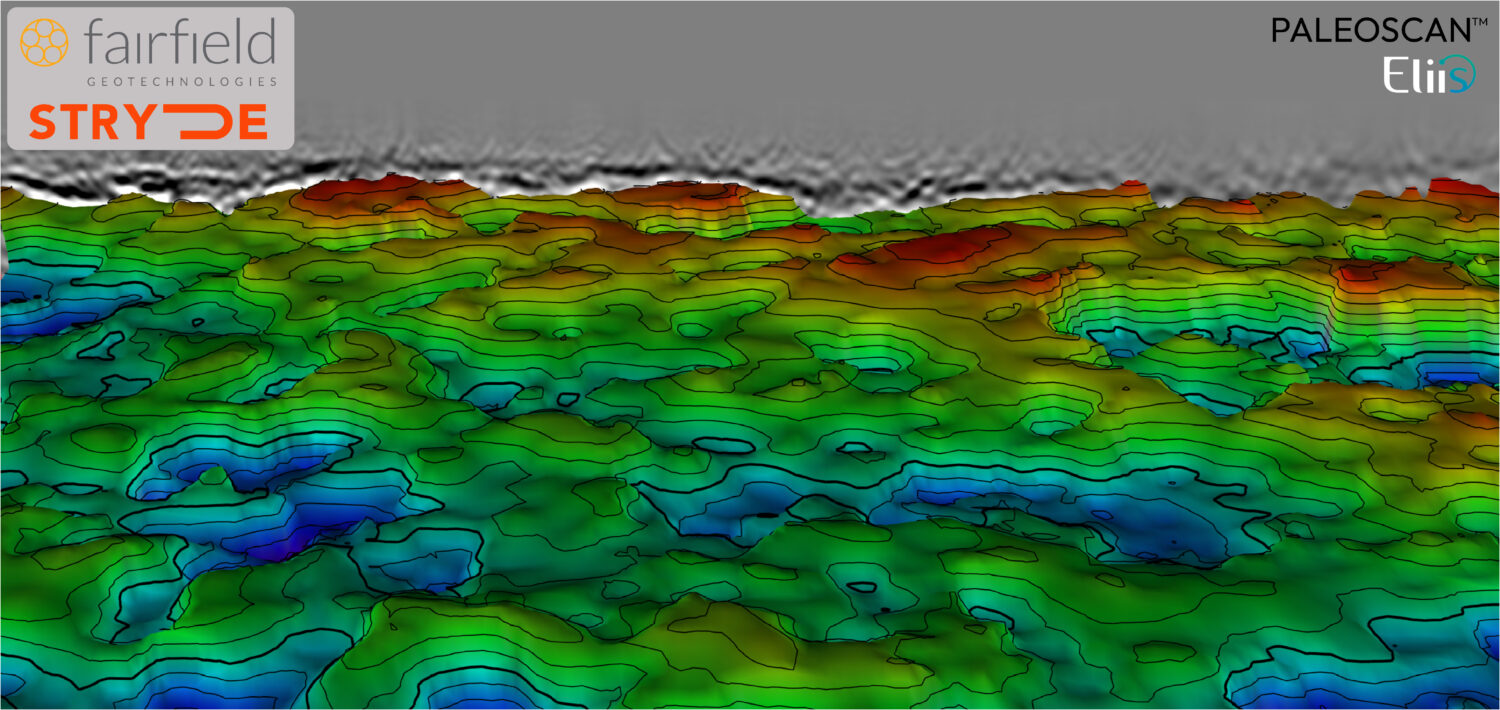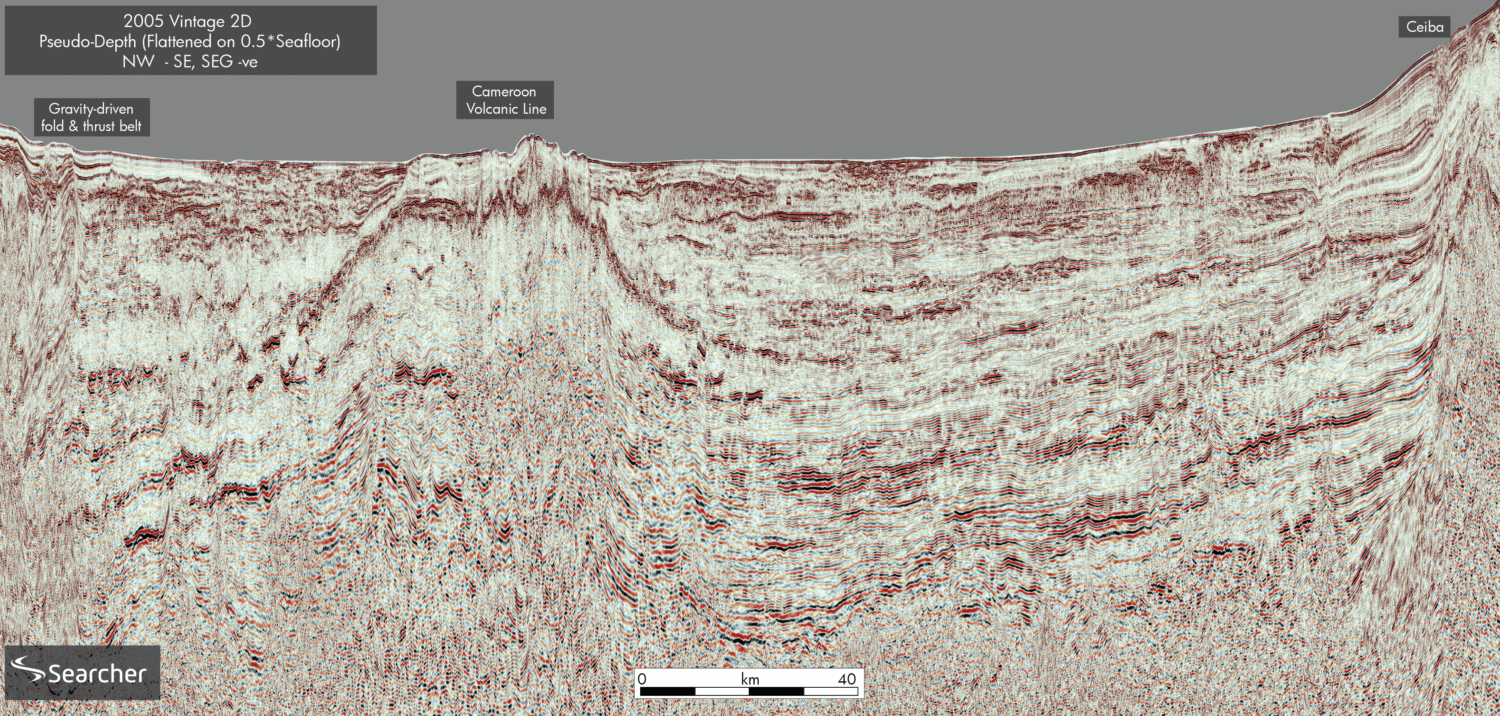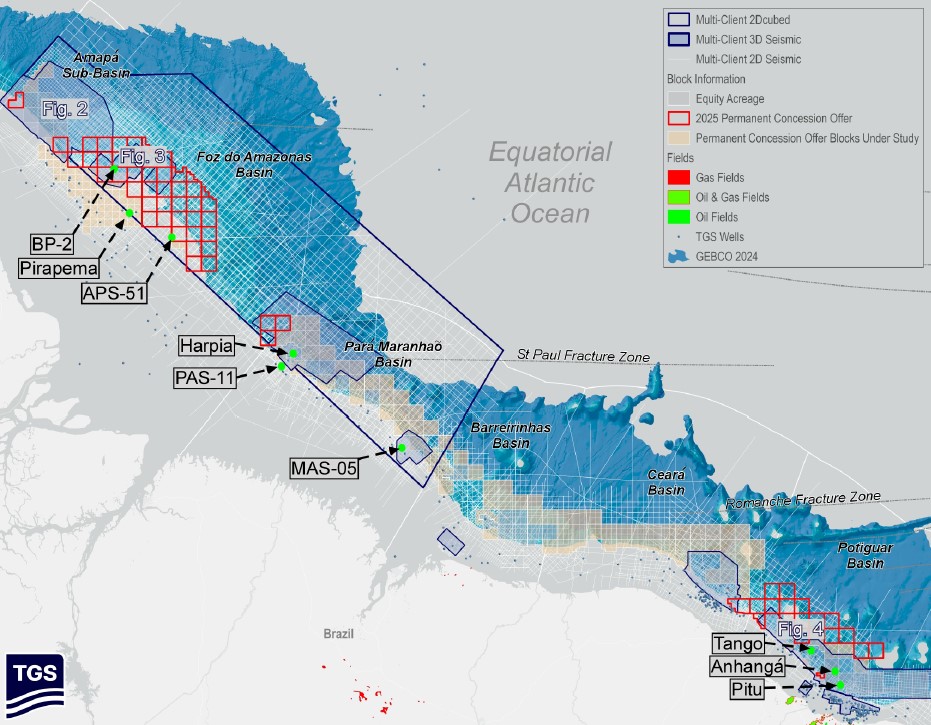
The deep-water frontier of Brazil’s Equatorial Margin
On February 11, 2025, the ANP announced and launched the 5th Round of Permanent Offer Blocks in the Concession Regime, sparking renewed interest in the Equatorial Margin Basins. Shallow water commercial fields and deepwater discoveries are limited but evidence of multiple deep- and ultra-deep water prospects and two proved petroleum systems are present.
The equatorial Margin of Brazil (EMB) could be on the brink of an oil and gas exploration boom. A string of wildcat discoveries in the adjacent margin (Guyana / Suriname) and on the conjugate margin (Ghana / Ivory Coast) suggest a high probability for similar discoveries in the EMB. Last year’s Potiguar Anhangá well and the 2011 French Guiana Zaedyus discoveries serve as “bookends” to a deep-and ultra-deep water frontier margin segment. These data points are important, as they point to a distal and deeper functioning petroleum system in the EMB. The 2024 Anhangá discovery in the Potiguar Basin was the first successful ultra-deep water well in the region. Prior to Anhangá, many of the previous exploration phases in the region had targets in the shallow and deep waters, aiming for rift-related units.
The 5th Concession Round of Brazil’s Permanent Offer (OPC) contains 64 exploratory blocks in the region totaling over 58,000 km2 (Figure 1). In the circa 600,000 km2 equatorial margin forty-seven blocks are in the Foz do Amazonas (Amapá sub-basin) and Pará-Maranhão Basins with water depths ranging from 200 – 2,000 m. The remaining 17 blocks are in the Ceará and Potiguar Basins in water depths ranging from 1,000 – 3,000 m.
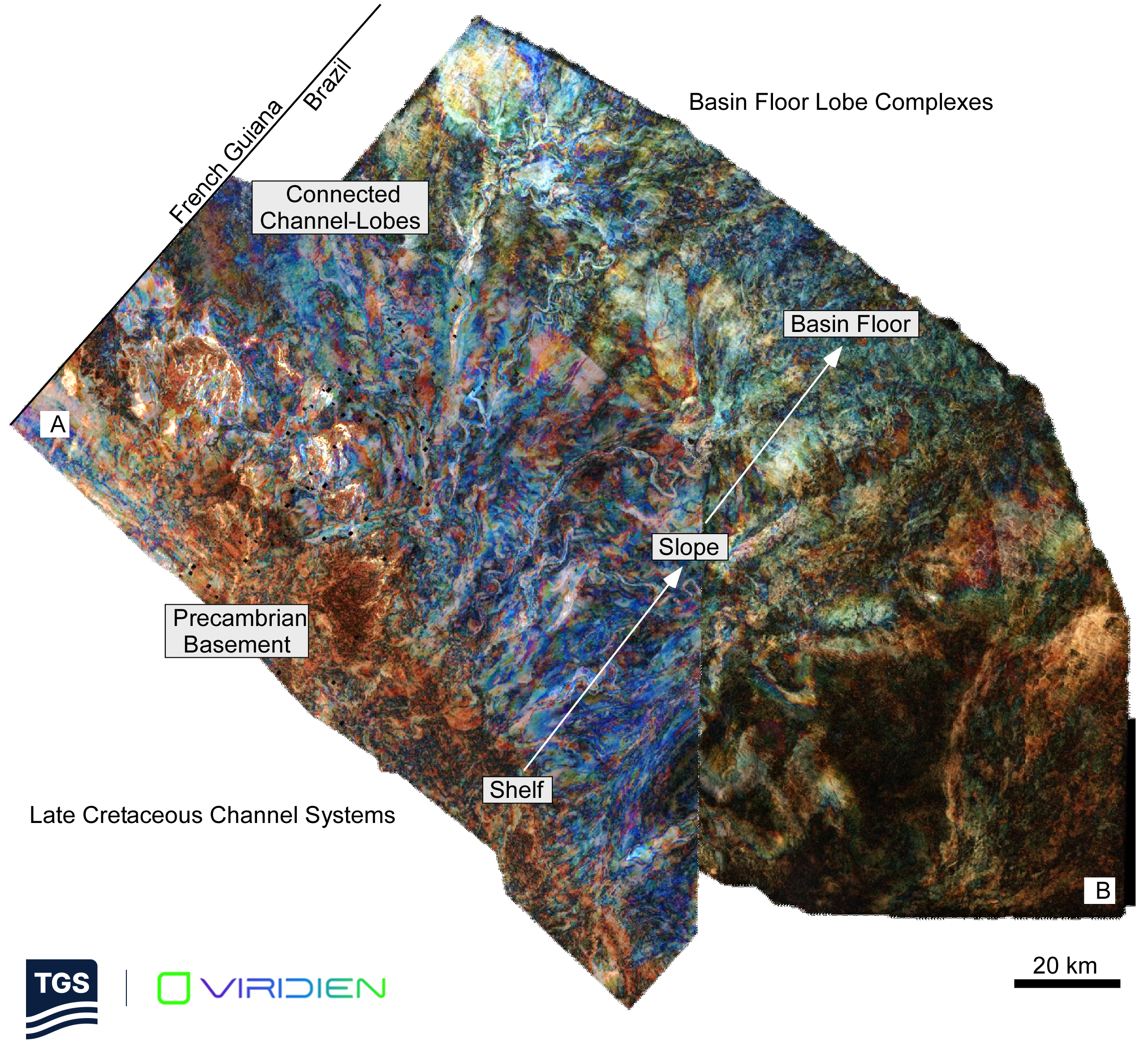
Exploration in the Equatorial Margin of Brazil has ebbed and flowed over time with the earliest exploration activities starting in the 1960s. The 1970 – 1980s were periods of intense exploration in the EMB resulting in a small number of discoveries. In the last 15 years, the conjugate margins and nearby basins have emerged as prolific oil and gas provinces. Here we highlight prospective features within the newly offered blocks. It is expected that the move of exploration targets to deeper waters will net a higher commercial success rate, as has been the case in many other frontier basins. Vast amounts of 2D and 3D seismic data to support exploration have been acquired overtime in the EMB. The TGS seismic data library in the EMB is unmatched with >82,000 km2 of 3D, >423,000 km of 2D and 270,000 km2 of 2DCubed seismic products.
Equatorial margin of Brazil
The Aptian / Albian opening of the Equatorial Atlantic Basin occurred along a series of pull-apart basins between South America and Africa. Oceanic spreading between these transform margins developed a deep-water domain and an open seaway between the Central and South Atlantic Oceans. The recently announced blocks of the OPC cover the slope-to-basin-floor setting of the passive margin phase units along the five distinct basins (Figure 1).
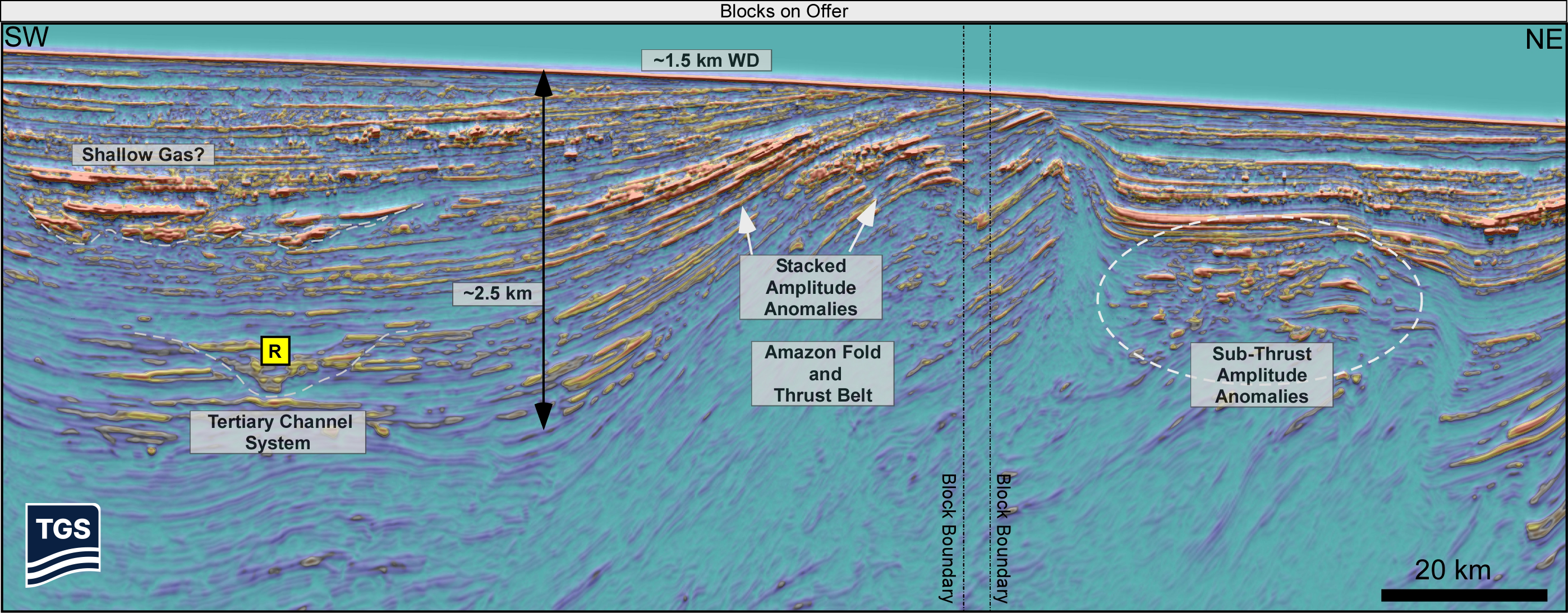
Blocks in the Foz do Amazonas and Pará-Maranhão Basins have a wide range of play types. Adjacent to the French Guiana border, spectral-decomposition attribute analysis reveals Mid-Late Cretaceous slope fans, stacked channel/levee complexes (Figure 2) that pre-dated the Amazonian drainage by >80 Ma. This depositional fairway is sourced from the Cretaceous drainage of the Oiapoque River. The Miocene-Present deposition of sediments from the Amazon River drainage has resulted in the accumulation of thick deltaic deposits. Due to the nature and magnitude of deposition, much of the deltaic cone has been structured in a fold and thrust belt (Figure 3). This deformation has led to the development of additional play types in the area. Within the offered block coverage, seismic amplitude anomalies are common and can be further assessed by using combined seismic tools such as Sweetness, Trace Envelope and Pseudo Relief attribute calculations (Figure 3). The thick deltaic sediments, although causing complexities, have insured the emplacement of petroleum system elements necessary for hydrocarbon generation along the margin segment. Notable well results in this area are Petrobras` PAS-11, Pirapema, APS-51A, Harpia and MAS-05 discoveries, plus the BP-02 well (Figure 1). All of which encountered oil and / or gas in clastic / carbonate reservoirs ranging from the Late Cretaceous to Miocene, proving at least two functioning petroleum systems offshore (one rift-related, the other drift-related). Of these, the Drift Stage Cretaceous Marine Anoxic Shales – Late Cretaceous turbidites petroleum system is promising, given its success in charging all the large recent discoveries in the Equatorial Atlantic Ocean.
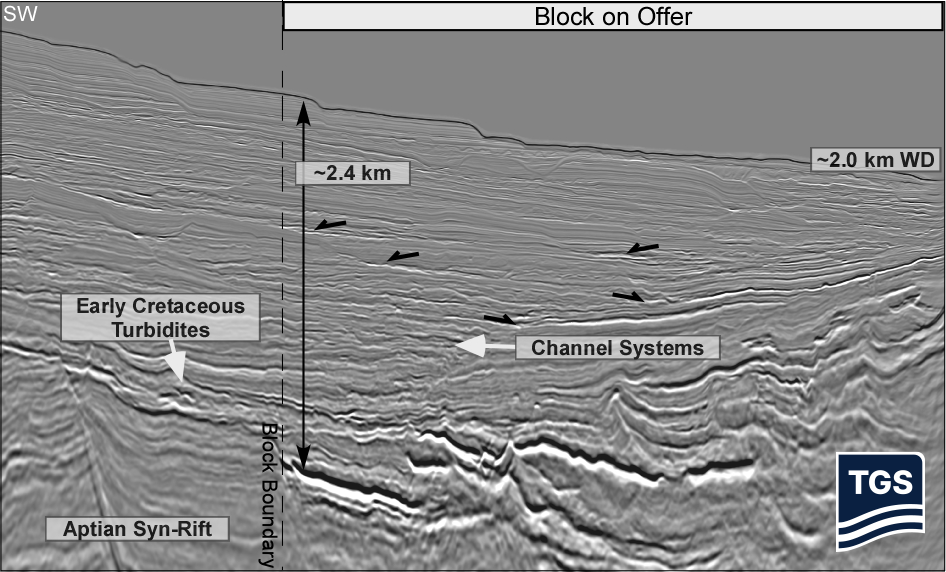
The blocks for offer in the OPC in the Potiguar and Ceará Basins are located along-strike and outboard of the Tango and Anhangá discoveries (Figure 1). Within the offered areas, we observe depositional fairways in the Mid-Late Cretaceous intervals spanning the Syn- and Post-Rift phases. The Aquiraz 3D cross-section (Figure 4) is 34 km from the Tango discovery and highlights the various play targets covered by the blocks on offer. Here structured syn-rift units are overlain by early drift turbidites, channel complexes and amplitude anomalies at stratigraphic onlaps (Figure 4).
In the coming months, explorers will re-evaluate the EMB opportunities within the blocks of the OPC round. When framing the prospectivity of the region, the culmination of evidence will show viable petroleum systems and plays across the Equatorial Margin’s basins. As has been demonstrated in other basins (i.e. Guyana, Suriname, Namibia), venturing into the deep-water domain can result in significant payoffs with commercial successes. Seismic data across the region show many prospective leads and untested play-types.


